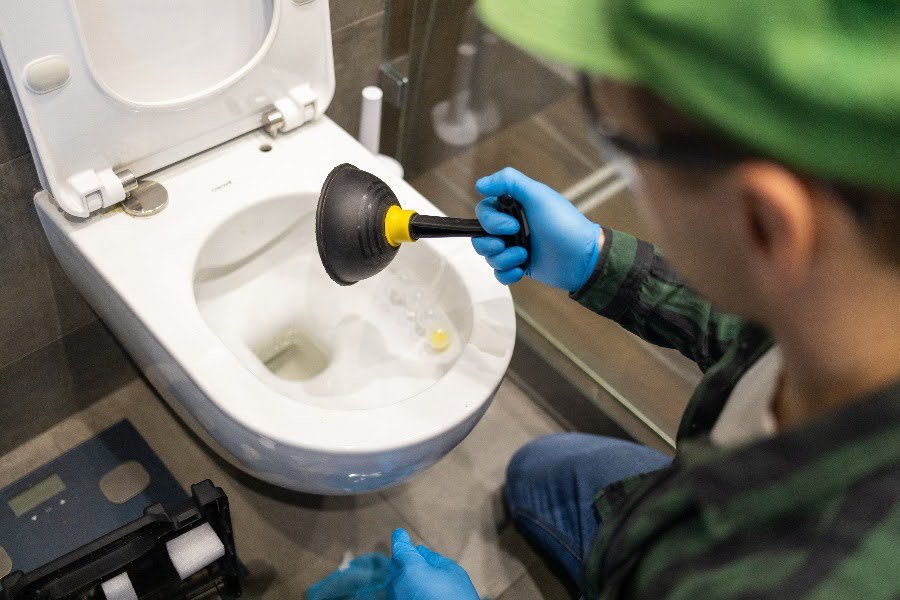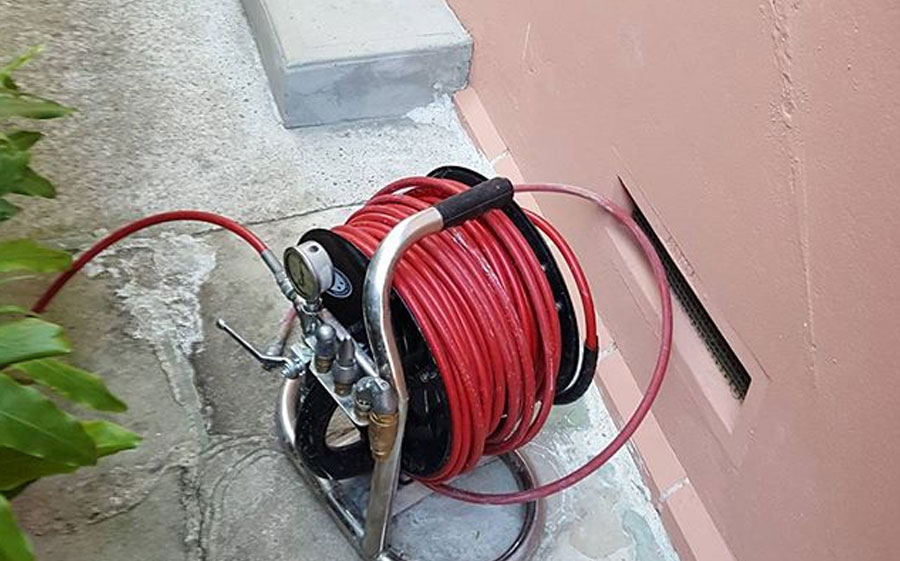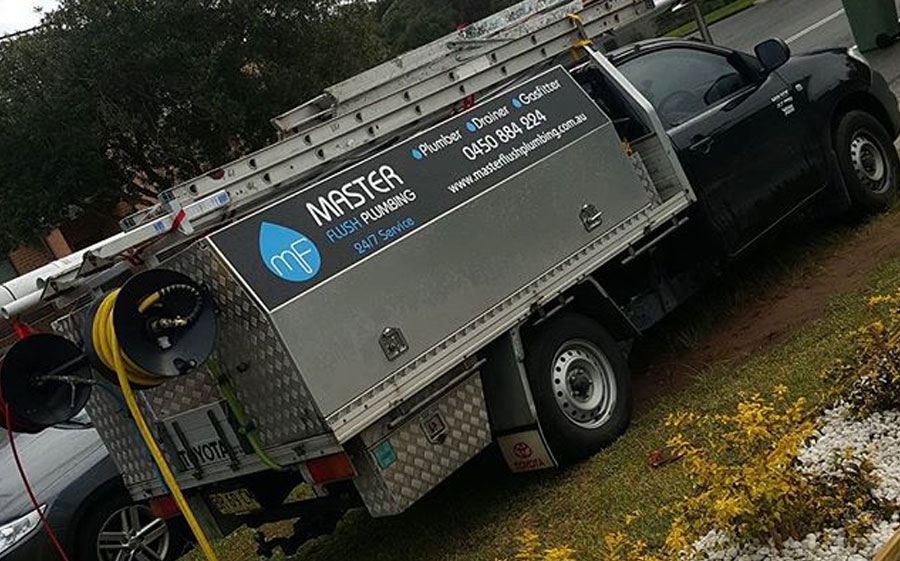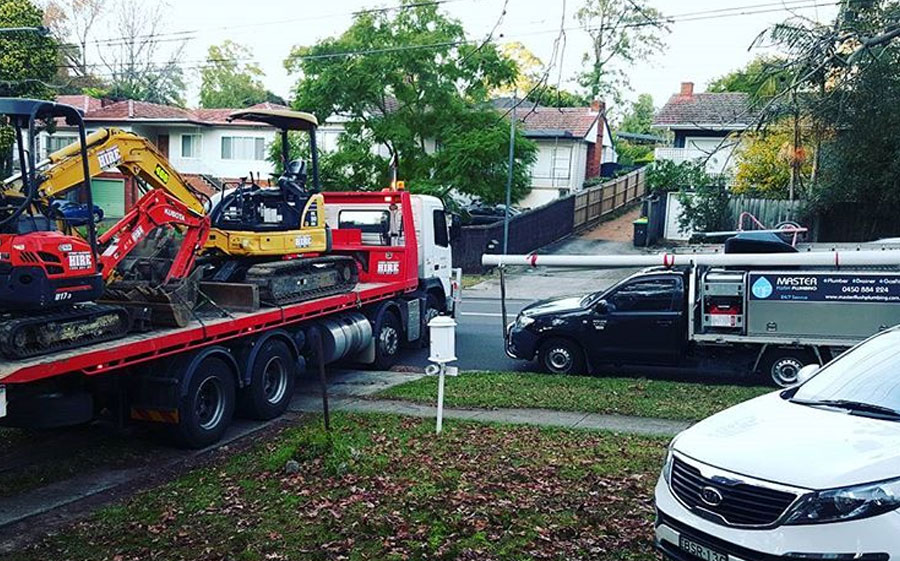Step By Step Guide on How to Unblock a Toilet Bowl
A blocked toilet is a common household nuisance that can cause stress and inconvenience. Fortunately, most clogged toilets can be resolved without calling a plumber. Using a toilet plunger is usually the most effective first step to unclog a toilet and can often solve the problem with a bit of effort and patience. This guide will walk you through various methods on how to unblock a toilet effectively.
While a plunger is the go-to tool, there are other methods to try if one isn’t available. A toilet brush can serve as a makeshift plunger in a pinch. For more stubborn blockages, a mixture of hot water and liquid dish soap or baking soda and vinegar can help break down the clog. These household items can be surprisingly effective at clearing minor obstructions.
If these methods don’t work, a toilet snake or plumbing snake may be necessary. This flexible tool can be fed into the toilet to break up more severe blockages. With the right approach and a bit of persistence, a blocked toilet drain can be cleared without professional help, saving time and money.
Disclaimer: This blog provides general advice and should not be considered professional plumbing advice. If you’re unsure or feel unsafe about your plumbing issue, we recommend contacting a professional. For fast and expert toilet repairs, call us at 0450 884 224 for a free call-out!
Recognising the Signs of a Blocked Toilet
A blocked toilet can cause significant inconvenience and potential health hazards. Identifying the issue early allows for prompt action and prevents further complications.
Identifying Common Causes
Excessive toilet paper is a frequent culprit in toilet blockages. Using too much paper can overwhelm the plumbing system, leading to clogs. Non-flushable items such as baby wipes, tampons, or cotton buds often cause blockages when flushed. Foreign objects accidentally dropped into the bowl can create obstructions. Children’s toilet paper toys or other small items may become lodged in the pipes.
Mineral build-up in older plumbing systems can narrow pipes over time, making blockages more likely. Tree roots infiltrating sewer lines can also cause severe blockages, especially in older homes.
Assessing Clogged Toilet Drain Flow
Slow draining is often the first sign of a developing blockage. If water takes longer than usual to disappear after flushing, it may indicate a partial clog. Gurgling sounds from the toilet bowl or nearby drains can signal air trapped in the pipes due to a blockage. Toilet water rising higher than normal in the bowl after flushing suggests an obstruction preventing proper drainage.
A completely blocked toilet will not flush at all. The water level may rise dangerously close to the rim, risking overflow. In severe cases, flushing might cause water to back up into other household drains like the bathroom sink. Unpleasant odours emanating from the toilet area can indicate a blockage trapping waste in the pipes. Persistent bad smells warrant immediate investigation to prevent health risks.
24/7 Plumbing Heroes
Toilet troubles don’t wait for business hours. Our emergency plumbing team is on call 24/7 to rescue you from unexpected blockages and overflows – 0450 884 224
Initial Steps to Unblock a Toilet
Before attempting to unblock a toilet, it’s crucial to take proper safety precautions and prepare the area. These initial steps will help ensure a safe and effective unclogging process.
Safety Precautions
- Put on rubber gloves to protect your hands from germs and bacteria.
- Wear old clothes or an apron to avoid soiling your regular attire.
- Ensure the bathroom is well-ventilated by opening windows or turning on exhaust fans.
- If the toilet is overflowing, locate the shut-off valve near the base of the toilet and turn it clockwise to stop the water supply. This prevents further mess and potential water damage.
- For stubborn blockages, consider wearing safety goggles to protect your eyes from splashes.
- Keep children and pets away from the work area to prevent accidents.
Preparing the Area
- Clear the space around the toilet, removing any rugs, toiletries, or decorative items.
- Place old newspapers or paper towels on the floor to catch any spills or overflows.
- Gather necessary tools: a plunger, toilet brush, and bucket filled with hot water.
- For tougher clogs, have a toilet snake or plumbing snake on hand.
- If using chemical cleaners, read the instructions carefully and ensure proper ventilation. Never mix different cleaning products, as this can create dangerous fumes.
- Remove excess water from the bowl using a bucket or cup if the water level is high. This reduces the risk of overflow and allows better access to the blockage.
Using a Plunger Effectively
A plunger is an essential tool for clearing toilet blockages. Proper technique and the right plunger type can quickly resolve most clogs without calling a plumber.
Choosing the Right Plunger For Toilet Bowl
Select a flange plunger for toilets. This type has an extra rubber flap that folds out to fit snugly in the toilet bowl, creating a better seal. For sinks and showers, use a cup plunger with a flat bottom.
Ensure the plunger is clean and in good condition. Replace cracked or worn plungers, as they won’t create a proper seal. Opt for plungers with wooden handles for durability and a comfortable grip. A heavy-duty plunger may be necessary for badly clogged toilets.
Plunger Technique
- Position the plunger over the toilet drain, ensuring the rubber cup covers the hole completely.
- For first-time use, run it under hot water to soften the rubber and improve suction.
- Push down firmly to expel air and create a seal. Use quick, forceful up-and-down strokes for about 20 seconds. Maintain the seal throughout to generate maximum pressure.
- After plunging, flush the toilet to check if the blockage has cleared. If not, repeat the process.
- For stubborn clogs, try alternating between gentle and forceful plunges to dislodge the obstruction.
Applying Home Remedies
Several household items can effectively unblock a toilet without the need for professional help. These methods are quick, affordable, and often solve minor blockages.
Hot Water Method
The hot water trick can help break down waste and clear minor clogs. Pour a kettle of hot water into the bowl from waist height. The force and heat can dislodge minor blockages. Let the water sit for a few minutes before flushing. If the water level remains high, wait 10-15 minutes before trying again. This method works best for soap or grease-based clogs.
Be cautious not to use boiling water in porcelain toilets, as extreme temperature changes may cause cracking. Warm water is often sufficient and safer for the toilet bowl.
Baking Soda and Vinegar
This fizzy combination creates a natural drain cleaner. Pour one cup of baking soda into the toilet bowl, followed by one cup of white vinegar. The mixture will bubble and fizz, creating a chemical reaction.
Let it sit for 20-30 minutes. Pour hot water into the bowl to rinse. Flush to check if the blockage has cleared.
For stubborn clogs, repeat the process or leave the mixture overnight. This method is effective for breaking down organic matter and neutralising odours.
Epsom Salt Method
Epsom salts can be an effective remedy for a blocked drain and clogged drain. Here’s how to use them:
- Pour eight to ten tablespoons of Epsom salt directly into the toilet bowl.
- Add a few cups of hot water to help dissolve the salt.
- Let the mixture sit for about half an hour to break down the blocked material.
- Flush the toilet to clear the blockage.
For a badly clogged toilet, you can create a more potent solution:
- Mix Epsom salt with dish detergent or liquid soap to form a paste.
- Pour this mixture into the toilet bowl and let it sit overnight.
- The paste will harden overnight, creating a solid mass that can help push the waste material down when you flush in the morning.
This method is particularly effective for breaking down organic matter and can be a good alternative when you don’t have a plunger handy.
Dishwashing Liquid Technique
- Dish soap can lubricate the pipes and help break down greasy clogs.
- Squeeze a generous amount of dishwasher liquid into the bowl.
- Add hot water and let it sit for 10-15 minutes.
- The soap will help loosen the blockage and make it easier to flush away.
- Flush the toilet to see if the clog has cleared. Repeat if necessary.
This method is particularly useful for grease-based blockages and can be combined with hot water for better results.
Methodical Use of Chemical Drain Cleaners
Chemical drain cleaners can be effective for clearing toilet blockages when used correctly. Proper selection and application are crucial for safety and efficacy.
Selecting a Chemical Cleaner
Choose a chemical cleaner based on the type of blockage.
- Caustic cleaners work well for organic matter while oxidising cleaners suit mixed organic and inorganic clogs.
- Acid-based cleaners are best for tough, non-organic blockages.
- Enzyme-based chemicals offer a gentler alternative. These use bacteria to break down organic matter, making them safer for pipes and the environment. They’re ideal for regular maintenance but may take longer to clear severe blockages.
Consider the toilet’s material when selecting a cleaner. Some harsh chemicals can damage porcelain or metal fixtures. Always read product labels to ensure compatibility.
Safe Application Tips
Prioritise safety when using chemical drain cleaners.
- Wear protective gear, including gloves and safety goggles, to guard against splashes.
- Ensure proper ventilation in the bathroom to avoid inhaling fumes.
- Follow the product instructions precisely. Most cleaners require pouring directly into the toilet bowl. Allow the recommended time for the cleaner to work before flushing.
- Never mix different chemical cleaners. This can create dangerous reactions and toxic gases.
- If one product doesn’t work, flush thoroughly before trying another.
- After application, dispose of any leftover product safely.
- Keep chemical cleaners out of reach of children and pets. Store in a cool, dry place away from other household chemicals.
Safety First, Clogs Last
If you’re uncomfortable handling chemical cleaners, our toilet repairs and plumbing experts can safely and effectively clear your drains – 0450 884 224
Mechanical Methods for Tougher Clogs
When plungers and household remedies fail to clear stubborn toilet blockages, it’s time to employ more robust mechanical solutions. These techniques use specialised tools to physically break up or remove clogs deep within the toilet’s plumbing.
Utilising a Plumbing Snake
A plumbing snake, also known as a drain snake, is a flexible metal cable designed to navigate through pipes and clear obstructions. To use a plumbing snake:
- Insert the snake into the toilet bowl.
- Gently push it down the drain while turning the handle clockwise.
- When you feel resistance, continue turning to break up the clog.
- Retract the snake slowly, pulling out debris as you go.
Plumbing snakes can reach deeper into pipes than other tools, making them effective for clogs located further down the plumbing system. They’re particularly useful for breaking up solid waste and retrieving foreign objects.
Implementing a Toilet Auger
A toilet auger, or closet auger, is a specialised tool designed specifically for toilet clogs. It features a protective rubber sleeve to prevent scratching the porcelain. To use a toilet auger:
- Insert the curved end into the toilet bowl.
- Push the auger down while turning the handle clockwise.
- When you encounter resistance, apply gentle pressure and continue turning.
- Retract the auger, bringing out any debris caught on the end.
Toilet augers are highly effective for clearing blockages in the toilet’s trap or just beyond it. They’re less likely to damage the toilet than standard plumbing snakes and can often resolve clogs that plungers can’t budge.
DIY Wire Hanger Technique
For those without professional tools, a coiled wire or old metal wire can serve as a makeshift unclogging device. To use this method:
- Straighten the hanger, leaving a small hook at one end.
- Wrap the hook end with a cloth to prevent scratching.
- Gently insert the hook into the toilet bowl.
- Push it down the drain, feeling for the blockage.
- Use a gentle back-and-forth motion to dislodge the clog.
While not as effective as purpose-built tools, this technique can work for minor clogs near the toilet bowl’s opening. It’s best suited for breaking up toilet paper blockages or retrieving small objects close to the surface.
Alternative Tools and Techniques
When a plunger isn’t available or effective, other household items can be used to unblock a toilet. These methods leverage common tools and techniques to dislodge blockages.
Using a Wet/Dry Vacuum
A wet/dry vacuum can be a powerful ally in unclogging toilets. First, empty the vacuum’s canister and clean it thoroughly. Cover the vent to prevent mess. Place the hose into the toilet bowl, creating a tight seal around the drain. Turn on the vacuum and let it run for about 10 seconds. The suction often dislodges the blockage.
If successful, the clog will move into the vacuum’s canister. Dispose of the waste properly and clean the vacuum thoroughly. This method works best for solid obstructions rather than paper-based clogs.
Toilet Brush Method
The humble toilet brush can double as an unclogging tool. Start by adding hot (not boiling) water to the bowl to soften the blockage. Insert the brush into the toilet bowl, positioning the bristles into the drain opening. Push and pull the brush vigorously, mimicking the action of a plunger.
The brush’s bristles can help break up softer blockages. Continue this motion for several minutes, adding more hot water if needed. Flush the toilet to check if the clog has cleared. This technique is most effective for minor blockages and is less likely to damage the toilet than using wire hangers or other makeshift tools.
When to Call a Professional Plumber
Knowing when to call a plumber can save time and money and prevent further damage to your plumbing system. Certain toilet blockages require expert skills and specialised tools.
Recognising Your Limits
If plunging and basic DIY methods fail to clear the blockage after several attempts, it’s time to call a plumber. Persistent clogs or slow drainage may indicate deeper issues within the pipes. Unusual sounds from the toilet or foul odours are also red flags.
Water backing up into other drains or overflowing toilets can signal severe blockages. These situations pose health risks and potential property damage.
If you suspect a foreign object is lodged in the toilet, don’t attempt removal yourself. Plumbers have cameras and retrieval tools to safely extract items without damaging the toilet.
Benefits of Professional Help
Plumbers bring expertise and advanced equipment to tackle complex blockages. They can quickly diagnose the root cause of persistent clogs, whether it’s tree roots, clogged pipe damage, or systemic issues.
Professional plumbers use hydro-jetting and motorised augers to clear stubborn blockages safely. They can also identify and repair any damage to pipes or seals that may be contributing to recurring problems.
Hiring a plumber can actually save money in the long run by preventing costly water damage and ensuring a thorough fix. They can also provide advice on maintaining your plumbing system to avoid future toilet blockages.
Preventing Future Toilet Clogs
Proper toilet usage habits and regular maintenance are key to avoiding blockages. By following best practices and implementing simple routines, you can significantly reduce the likelihood of clogs.
Best Practices for Toilet Use
Only flush toilet paper and human waste down the loo. Avoid disposing of items like baby wipes, cotton materials, nappies, or sanitary products in the toilet, even if labelled ‘flushable’. These can accumulate and cause blockages over time.
Use an appropriate amount of toilet paper. Excessive amounts can overwhelm the system and lead to clogs. If needed, flush multiple times rather than attempting to dispose of large quantities at once.
Be mindful of what goes into the toilet bowl. Keep small objects like children’s toys or jewellery away from the toilet to prevent accidental flushing and potential blockages.
Regular Maintenance Routines
- Clean your toilet weekly using a toilet brush and mild cleaner. This helps prevent the build-up of mineral deposits and bacteria that can contribute to clogs.
- Perform a monthly deep clean by pouring a cup of white vinegar into the bowl and letting it sit for an hour before scrubbing and flushing.
- Consider using a toilet auger every few months to clear any developing blockages before they become problematic.
- Install a drain screen or guard to catch hair and other debris that might otherwise accumulate in the pipes.
- Check the water level in your toilet cistern periodically. Ensure it’s at the correct height to allow for proper flushing and waste removal.
Chronic Clogs? Time for a Check-Up
Experiencing frequent clogs? It might be time for a thorough inspection. Our blocked drains & burst pipes experts can identify and fix underlying issues in your system – 0450 884 224
Understanding Your Plumbing System
A toilet is part of a complex plumbing network in your home.
- It consists of pipes that carry water and waste away from fixtures to the main sewer line.
- The toilet bowl connects to a trap, an S-shaped pipe that prevents sewer gases from entering your bathroom. This trap leads to a larger drainpipe, which joins the main soil stack.
- Water enters the toilet through a supply line connected to the cistern.
- When you flush, water rushes from the cistern into the bowl, creating a siphon effect that pulls waste down the drain.
Understanding these components can help you identify potential issues. Blockages often occur in the trap or drainpipe, where solid waste can accumulate. Regular maintenance of your plumbing system can prevent many toilet problems. This includes avoiding flushing non-biodegradable items and using appropriate cleaning products.
Knowing the layout of your plumbing can also assist in locating shut-off valves and access points, which is crucial during emergencies or when repairs are needed.
Mastering the Art of Toilet Unblocking
Unblocking a toilet needn’t be a daunting task. With the right tools and techniques, most blocked toilets can be cleared quickly and easily at home. A plunger remains the top choice for tackling clogs in blocked toilet drains. Its simple yet effective design makes it a must-have for every household. For those times when you find yourself with a toilet without a plunger, we’ve covered several alternative methods using common household items.
For stubborn clogged pipes, a toilet snake or DIY drain snake made from a wire coat hanger can be effective. Remember to be gentle when using a coat hanger to avoid scratching the toilet bowl or damaging the pipe’s edges.
Natural methods like hot water and dish soap, baking soda and vinegar, or Epsom salts provide gentle alternatives for blocked drains. These household items can often dissolve minor clogs without harsh chemicals. For those feeling adventurous, a DIY Drano bomb using baking soda and vinegar can be a powerful solution, but always use caution with this method.
Regular maintenance and proper usage help prevent future toilet blockages. Avoid flushing non-biodegradable items and use toilet paper sparingly. Keep your toilet seat clean and check it regularly for any signs of wear that could lead to blockages.
If DIY methods fail after a few hours of effort, it’s best to call a professional plumber. They have specialised equipment to handle severe clogs without damaging your plumbing system. Remember, for any plumbing task, safety comes first – always suggest wearing rubber gloves to protect yourself from bacteria and chemicals.
With these strategies, you’re well-equipped to handle most toilet blockages, from minor clogs to badly blocked drains. Remember to approach the task calmly and methodically for the best results. Keep these tips in mind, and you’ll be a master of toilet unblocking in no time!











